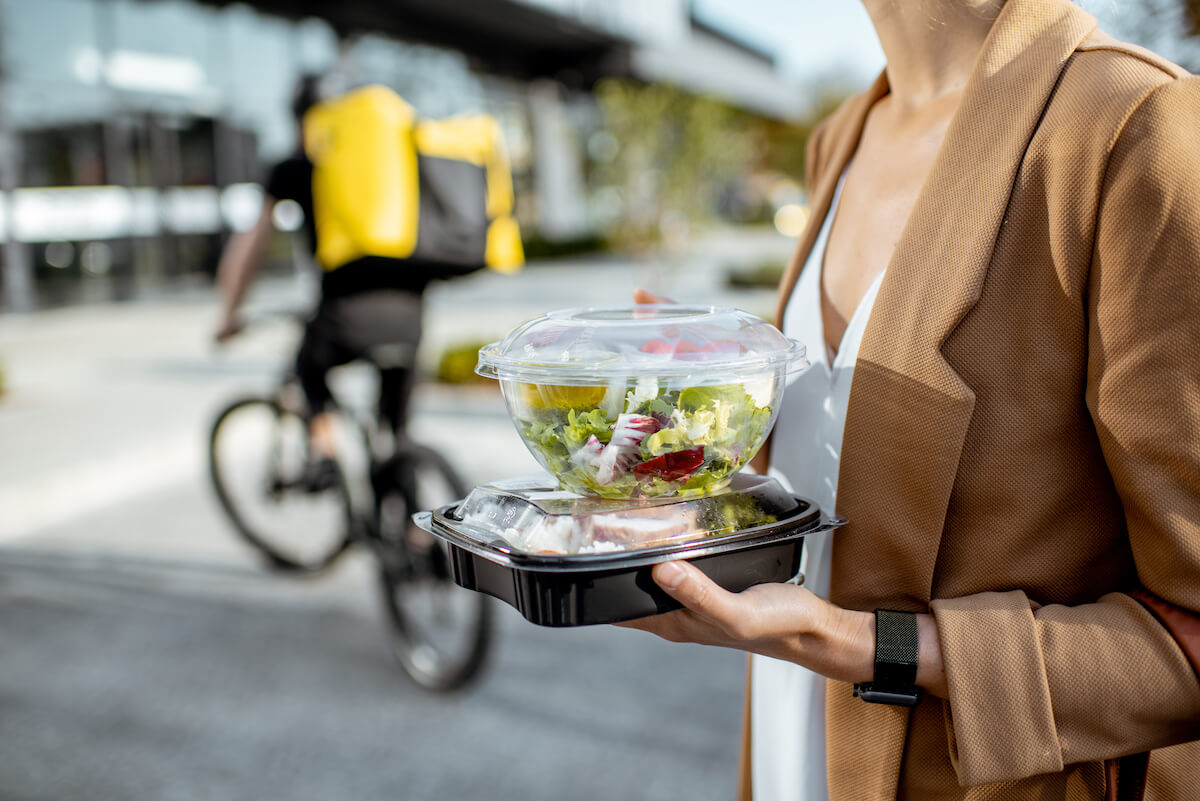- Businesses that make decisions using sophisticated data analytics systems, like Wizardline, statistically increase their profits by 8-10%
- AI and automation allow QSR franchises to improve service standards by redeploying team members to fulfillment and higher-value guest interactions
- Digital training strategies and modernized HR practices improve employee retention and team member performance by attracting first-rate workers and motivating them to stay on board
The quick-service restaurant (QSR) franchise model is in a constant state of flux, requiring operators to adapt to changing circumstances and new industry and franchise trends to avoid lagging behind their competition. It’s understandable if franchisors worry they’re falling behind their competitors in the restaurant tech arms race or failing to implement the latest best practices, especially if they’re under financial strain.
If that’s you, this guide to franchise trends will help. These six key trends help operators to increase revenue, improve service quality and streamline their operations so they can run multiple stores like they would a single store.
1. Labor redeployment

Although the COVID pandemic is on the downswing and more QSR franchise owners are on the road to economic recovery, a lot of franchisors are still dealing with labor shortages caused by the past year’s Great Resignation. Food-service entrepreneurs can’t always count on having a fully staffed team at their disposal, leading to an industry-wide push to make the most of the labor they do have. That means freeing up staff from mundane, tedious tasks like order-taking so they can focus on higher-value tasks like food prep, order fulfillment and in-person guest services such as handing off curbside pickup orders. Leading franchise brands like Taco Bell are using this approach: noting a growing consumer preference for contactless ordering, some Taco Bell locations have shifted entirely to self-service kiosks, with no staff working the front counter. After ordering and paying at the kiosk, guests retrieve their completed orders from a pickup cubby.
2. Data gathering

Recording and analyzing relevant data is a critical aspect of running a successful restaurant franchise system. AI-based data analytics is one of the most effective ways to accomplish this: AI collects data about guest ordering trends so that restaurants can offer customized order suggestions and upsells. Service providers like Wizardline and platforms like ConverseNow’s Looker analytics do the heavy lifting by providing franchisors with automated reports on key metrics. This kind of reporting allows QSR operators to track KPIs like total sales, average ticket size, coupon use and call volume without needing to crunch the numbers themselves.
It goes without saying that gathering data won’t do you much good if you don’t act on it. The food service sector has historically lagged behind other industries in terms of utilizing data, but it’s one of the best ways to improve restaurant profitability. Incorporating analytics into the decision-making process is a rising franchise trend because it earns businesses an average of 8-10% in additional profits across industries.
3. Artificial intelligence

Restaurant AI solutions are a hot topic in the food service franchise industry, and one of the more notable franchise trends. AI technology such as virtual ordering assistants are a game-changing tool enabling restaurant managers to operate at peak performance and accelerate franchise growth. Fast food outlets and other quick-service restaurants are often stressful work environments, especially during busy periods like lunch and dinner hours. Sometimes, this can cause team members to panic, leading to incorrect or late orders and disappointed guests.
Virtual ordering assistants powered by conversational AI are the perfect addition to the team: they never panic and consistently provide excellent service regardless of how many guests they need to assist. Even better, voice AI assistants aren’t merely executing simple, scripted actions. Virtual assistants are dynamic conversationalists that recognize context clues, read between the lines and refine their algorithms with each order. This means the ordering assistants learn to recommend relevant order suggestions and upsells based on prior guest orders. Virtual ordering assistants record multiple guest orders simultaneously across all ordering channels, so guests can enjoy the dining experience they’re looking for even if the restaurant is otherwise short on physical staff.
4. Automation

It’s been more than a century since Henry Ford popularized assembly line operations, and it remains one of the most efficient ways to ensure consistent and standardized products. Consistency is a major concern for QSR franchises: a Big Mac purchased from a McDonald’s in Wichita, Kansas should taste the same as one served by a franchise in London. Automating at least some steps in the food prep process is one of the simplest ways to achieve this. In fact, 50% of U.S. restaurant operators intend to adopt some form of automation in the next two to three years.
QSR brands like Chipotle are taking this franchise trend one step further with robotics. In partnership with Miso Robotics, the popular burrito chain recently debuted an automated kitchen assistant nicknamed “Chippy.” Chippy, as the name suggests, handles tortilla chip-making duties, allowing Chipotle team members to concentrate on the other steps in the assembly line.
5. Digital training and onboarding

Digital training platforms offer QSR business owners the opportunity to cut costs while improving their training and onboarding methods simultaneously. New employees complete self-paced digital training programs before ever working a shift. Traditional manual training and onboarding procedures are expensive and time-consuming, and frequently require senior employees to mentor trainees and compensate for their unfamiliarity with the job. In contrast, digital training solutions prepare new hires to excel from their very first shift.
Not only will this lead to improved work performance, but it also reduces the likelihood of no-shows and employee attrition—the bane of any small business. Digital training applications are as convenient as they are effective: in addition to costing less than paper-based training, they don’t necessarily require QSR franchise ownership to completely reinvent their onboarding programs. Instead, operators simply change the format of their training sessions, e.g., replacing in-person presentations with videos and audio clips.
6. Modernized hiring pipelines

Antiquated human resources practices may be partly responsible for the labor market’s sluggish performance. Electronic applications are often overly long, requiring candidates to enter extraneous or redundant information, such as typing in their work history even though they’ve already uploaded a resume. These issues are even more of a detriment given the shift to mobile job searches and applications, as typing in large amounts of information is even more tedious on small devices.
Similarly, job listings don’t accomplish much if potential applicants never see them. Find workers where they are—and these days, that’s often online. This is especially true for millennial and Gen Z job seekers, who are rarely apart from their smartphones. A mobile-friendly website and application portal will likely lead to more and better applicants. McDonald’s is a noteworthy example of a company successfully utilizing a mobile-first social media recruitment strategy. The fast-food giant piloted a Snapchat-based hiring campaign where job seekers could use Snapcodes to apply for jobs nearly instantaneously. Debuting in Australia, this “Snaplications” campaign resulted in 3,000 applications in the first 24 hours, leading to their first hire just two days later. This creative method got them four times more applicants in the first day than traditional methods had gotten them in a week.
Stay on top of QSR franchise trends like voice AI

Monitoring and staying on pace with QSR franchise trends is a necessary step to remain competitive in the restaurant sector. The best franchises are constantly searching for innovative business strategies and technology applications to improve efficiency, profits and franchise marketing efforts.
Voice AI is one such innovation. ConverseNow’s industry-leading voice AI virtual ordering platforms continue to transform the QSR business model. Franchisees from some of the top national and international franchises, including Domino’s, Fazoli’s and Blake’s Lotaburger are using them to great success, and the assistants are operating in more than 1,200 stores across 43 states. Modernize your restaurant with voice AI technology to increase franchise sales and jumpstart franchise growth. Schedule a demo today with ConverseNow.